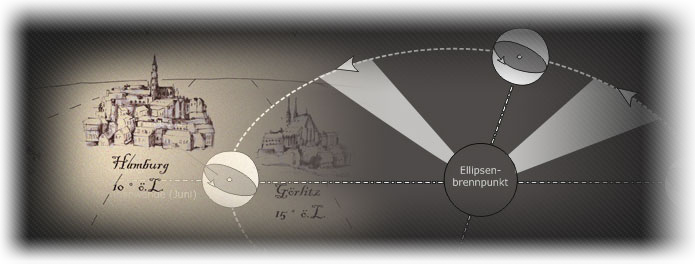
What's the time?
When people look at a sundial, they tend to immediately check the sundial time against their watch. But generally the time shown on a sundial does not correspond to the standard time shown on a mechanical timepiece. This is attributable to an astronomical and a geographical factor.
Inasmuch as the earth's axis of rotation is inclined when viewed against its path around the sun, and the earth's path around the sun is elliptical, sundials "run" faster or slower over the course of a year. This phenomenon is known as time compensation. Some of today's complex mechanical timepieces are equipped with hands that indicate this discrepancy.
Owing to the geographical factor brought into play by the location of a sundial, it normally indicates what is known as "true local time." For example, when a sundial shows noon, it means that the sun has reached its zenith for the sundial's location. 100 km east of the sundial this zenith is reached a few minutes earlier, and to the west, a few minutes later.
Unlike true local time, standardized zone time (in Central Europe UTC (Universal Time Coordinated) + one hour, i.e. CET) is used in a broad swathe of countries. As a result (to take one example), it's always noon at the same time at all points between Crakow and Paris, despite the fact that the sun reaches its zenith one hour later in Paris than it does in Crakow. Yet another complicating factor in this regard is that sundials do not take account of daylight savings time, and instead show natural time.

